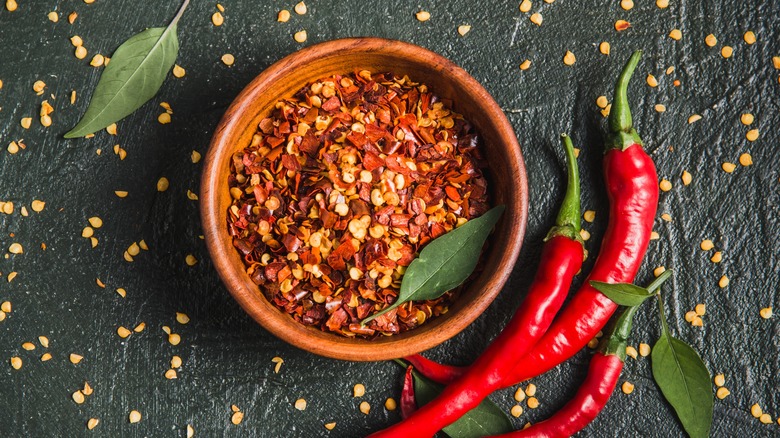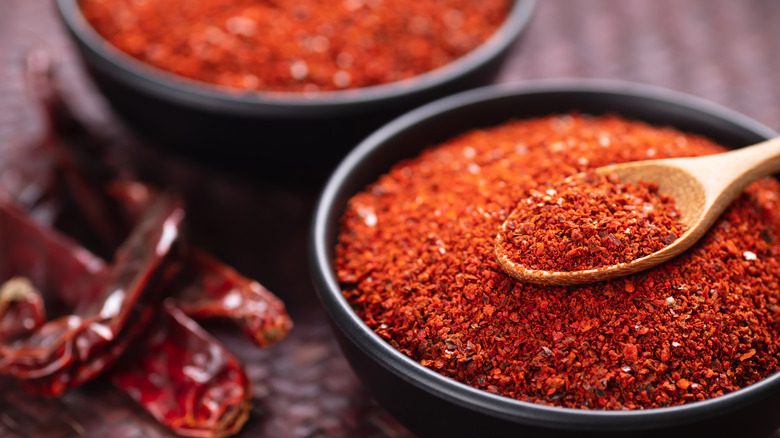How To Make Red Pepper Flakes From Scratch And Why You Should
Red pepper flakes are a welcome addition to pastas, stir fries, and a variety of other dishes. Fiery, and sometimes smoky, they give a kick to spicy shrimp scampi and Neapolitan pizza. Considering how much heat and flavor red pepper flakes add to a dish, they're surprisingly easy to make. There are rows and rows of the flakes to be found in the grocery store, but making your own allows you to choose what exactly goes into your red pepper flakes.
From the kind of chile pepper you use to make them to whether or not your flakes contain seeds can all be decided by you. To make your own red pepper flakes, opt for dried chile peppers to make the process easier. If you have fresh chiles, put them in the oven at 135 degrees Fahrenheit for a few hours or leave them in a dehydrator overnight.
When they're crumbling apart, transfer the chiles to a blender or food processor and shred them for less than a minute. Making red pepper flakes without seeds requires finer flakes, so blend them for longer. Afterwards, pour the blended flakes into a colander with holes smaller than the seeds. Not all the seeds will stay back, but there will be significantly less seeds compared to store-bought red pepper flakes.
What peppers can you use for red pepper flakes?
Red pepper flakes are typically made with mostly cayenne peppers, with other types of chiles making up the rest of the mix. When you make your own, the balance of chiles is wholly up to you. For red pepper flakes that have a slightly sweet edge, use Halaby chile peppers, the spice that's used to make Aleppo pepper.
For true spice enthusiasts, blend up some Carolina Reaper peppers. Considered the world's hottest pepper, the sweltering pepper has a fruity taste that will certainly bring the heat to any meal. If that's too much to bear, the Anaheim pepper is mild with a fruity taste. The subtle warmth of the pepper is thanks to its smoky quality.
No matter the pepper you use, red pepper flakes tend to diminish in quality after about a year. If stored correctly, you'll only need to make a batch annually. Keep them in an airtight container in a cool, dark place.

